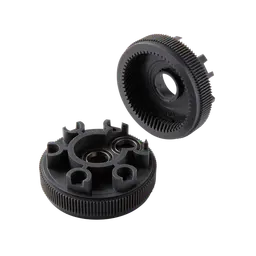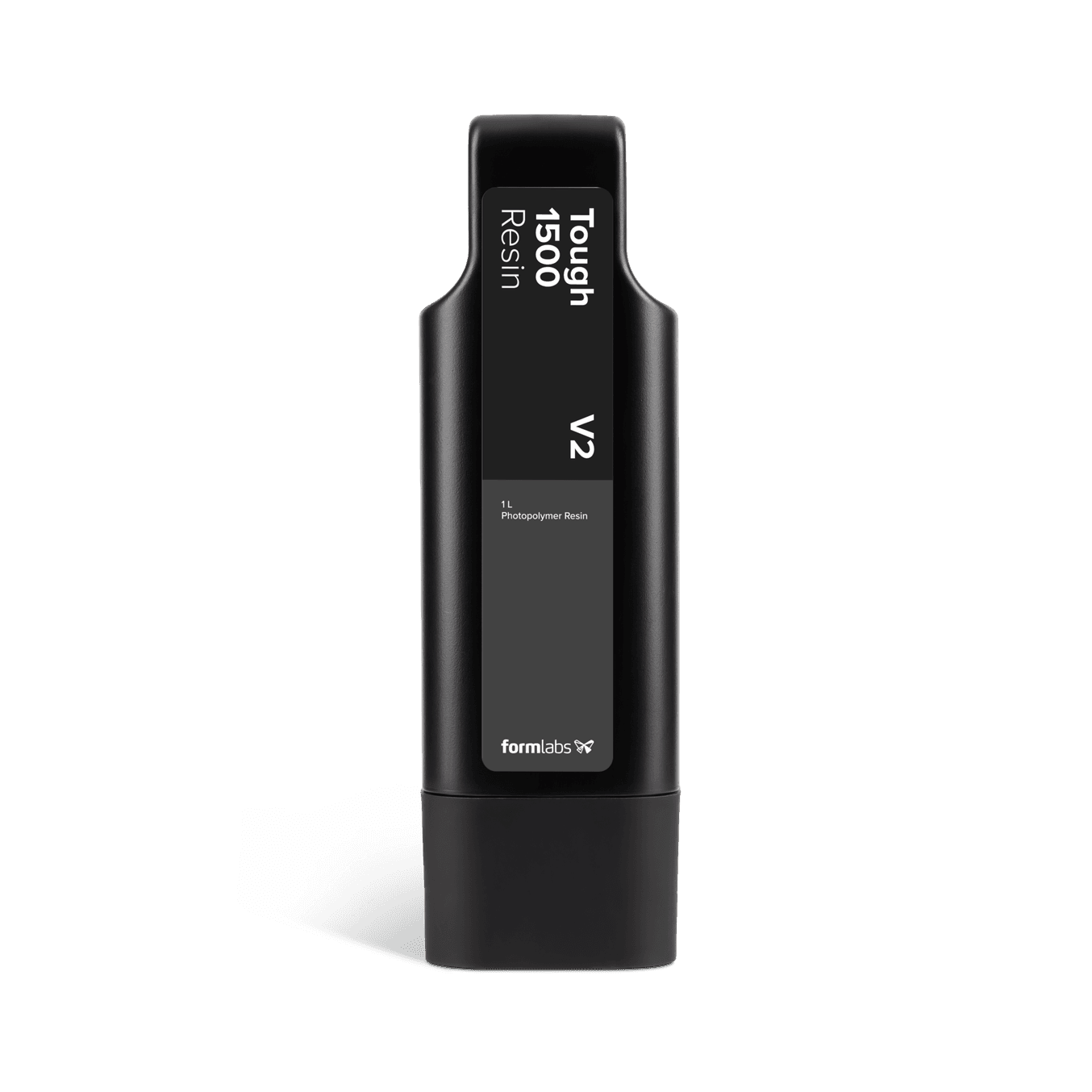Tough 1500 Resin V2
Engineering
SLA
Pliable
34 MPa
41 MPa
1.37 GPa
Select Printer Series and Resin Volume
| Bulk order quantity (L) | Discount % |
|---|---|
| 1 | 0% |
| 30 | 15% |
| 60 | 20% |
| 120 | 25% |
| 240 | 30% |
| 1,000 | 35% |
| 2,000 | 40% |
| 3,000 | 45% |
Tough 1500 Resin V2 is a resilient material with strength, stiffness, and toughness comparable to polypropylene (PP), offering exceptional resistance to fractures, impacts, and shattering.
Create parts that balance stiffness and ductility, whether for compliant mechanisms or rugged enclosures with self-tapping screws and snap fits. Tough 1500 Resin V2 enables a wide range of applications, from functional prototypes to end-use jigs and fixtures.
Tough 1500 Resin V2 is a new material formulation that leverages the Form 4 Series to deliver 10 times higher fracture toughness than the previous version.

Tough 1500 Resin V2 has been added to your cart.
Why Choose Tough 1500 Resin V2?
Robust, resilient and ductile material that rivals the toughness of polypropylene.
Tougher Where It Matters
10 times higher work of fracture, so parts don’t fail when drilled, tapped, or cracked. Three times higher Gardner impact strength for thin walls that don’t shatter.
Ductile and Resilient for Long-Lasting Compliant Parts
Extremely high elongation at break (155%) and Ross flex fatigue (8,000 cycles) for features like snap fits and compliant mechanisms.
High Environmental Stability for Demanding Applications
The highest temperature and UV resistance (66 °C HDT and ~30.4% EAB* after 400 hours accelerated aging) of any high-compliance (>100% EAB) SLA material.
*When tested under ASTM D4459 Accelerated indoor aging standard.
Tough Parts That Don’t Deform Over Time
High creep resistance matching polypropylene, with less than 3% strain under 4 MPa load after 2 weeks.
Applications
Tough 1500 Resin V2 is ideal for resilient prototyping or simulating the toughness of polypropylene (PP).
Consider Tough 1500 Resin V2 for:
Mechanical Properties*
| Tough 1500 Resin V2 | Polypropylene (extrusion grade) | |
|---|---|---|
| Ultimate Tensile Strength | 34 MPa | 4930 psi | 29.2 MPa | 4235 psi |
| Tensile Modulus | 1460 MPa | 212 ksi | 1600 MPa | 232 ksi |
| Elongation at Break | 155% | 125% |
| Gardner Impact @ 1/32” (0.8 mm) | 5.9 J | 52 in-lb | 2.7 J | 24 in-lb |
| Work of Fracture | 1011 J/m2 | 69.3 ft-lb/ft2 | ~2000 J/m2 | 137 ft-lb/ft2 |
| Heat Deflection Temp @ 0.45 MPa | 66 °C | 151 °F | Not tested. From literature, ~85-100 °C | 185-212 °F |
* Material properties may vary based on part geometry, print orientation, print settings, and temperature. Data was obtained from parts printed using Form 4, 100 μm, Tough 1500 V2 settings and post-cured with a Form Cure V2 for 12 minutes at 70 °C.
Formlabs Tough Resins
Next-Generation Tough Resins That Rival Thermoplastics
Compare Formlabs Tough Resins
Tough 2000 Resin V2

Key Characteristics
Strongest and stiffest
Comparable Thermoplastic
ABS
Recommended Applications
Robust jigs, fixtures, protective shells, and snap-fit enclosures
Parts that require high temperature and creep resistance
Tough 1500 Resin V2

Key Characteristics
Balanced blend of stiffness and compliance
Comparable Thermoplastic
PP
Recommended Applications
Parts that need a combination of stiffness and ductility to create compliant mechanisms like latches, flexures, and dampers
Clasps and buckles, self-tapping screw bosses, hinges
Tough 1000 Resin

Key Characteristics
Toughest and most ductile
Comparable Thermoplastic
HDPE
Delrin (POM)
Recommended Applications
Impact-resistant jigs, fixtures, and parts, and squeezable prototypes
Low-friction assemblies, such as gears and ball joints
Post-Processing
Washing
The foundational step in any SLA post-processing workflow is to remove any excess resin on the surface of the parts through an alcohol or ether wash.
For the best surface finish, Formlabs recommends allowing parts printed in Tough 1500 Resin V2 to air dry for at least 10 minutes after washing, before handling.
Curing
Post-curing Engineering and Specialty Resins is essential for parts to achieve their full strength and functionality. This step completes the chemical reaction initiated during printing, transforming the part from its green state into a fully finished component.

